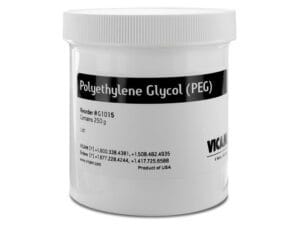How to Control Indoor Molds and Reduce Allergy Risks

Mold isn’t just an eyesore—it’s a major trigger for allergies, asthma, and even eczema. These microscopic fungi spread through airborne spores, which thrive in damp, humid environments. If you or your family members are sensitive to mold, taking proactive steps to control indoor mold growth is crucial for better health.
Here’s how to effectively prevent and reduce mold in your home—plus some common myths you should stop believing.
1. Control Moisture: The Key to Mold Prevention
Mold needs moisture to survive, so the best way to prevent mold is by reducing indoor dampness.
✔️ Fix leaks immediately – Inspect and repair leaking roofs, pipes, and faucets to prevent water buildup.
✔️ Use air conditioning & dehumidifiers – Keep humidity levels below 50%. Empty and clean dehumidifiers regularly to prevent mildew.
✔️ Improve ventilation – Open windows or use exhaust fans in kitchens and bathrooms to reduce moisture.
✔️ Avoid storing items in damp areas – Store clothes, books, and furniture in dry, well-ventilated spaces.
2. Keep Your Home Clean and Mold-Free
Even small amounts of mold can release allergens into the air, making regular cleaning essential.
✔️ Wipe down hard surfaces – Use water and detergent. If needed, a 5% bleach solution can help (never mix bleach with other cleaners). Dry completely.
✔️ Professional help for large mold problems – If mold covers more than 10 square feet, hire a mold remediation specialist.
✔️ Clean air conditioning units regularly – Mold can build up in HVAC systems, so schedule regular maintenance.
✔️ Wash moldy clothing properly – Wash affected clothes with soap and water. If they can’t be cleaned or dried completely, discard them.
3. Improve Air Quality and Minimize Mold Exposure
✔️ Use HEPA air filters – These help trap airborne mold spores and improve indoor air quality.
✔️ Minimize upholstered furniture – Fabric can trap moisture and mold spores, so opt for leather, vinyl, or wooden furniture.
✔️ Replace carpets with hard flooring – Carpets retain moisture, especially in damp areas. Choose wood, tile, or linoleum instead.
✔️ Keep firewood outside until needed – Storing firewood indoors can introduce mold spores.
4. What Doesn’t Work: Common Myths About Mold Removal
🚫 Myth: “Mold won’t grow if I just lower the temperature.”
🔍 Fact: Mold can grow at almost any temperature if humidity is high. Simply turning down the thermostat won’t stop mold if there’s moisture present.
🚫 Myth: “Bleach kills all mold.”
🔍 Fact: Bleach can remove mold on non-porous surfaces like tiles and countertops, but it doesn’t fully penetrate porous materials like wood and drywall. Mold can still grow beneath the surface.
🚫 Myth: “Painting over mold will stop it from spreading.”
🔍 Fact: Mold-resistant paint only helps prevent future mold growth. If you paint over existing mold without treating the root cause, it will eventually resurface.
🚫 Myth: “A musty smell means I can just use an air freshener.”
🔍 Fact: A musty odor is a sign of mold growth. Covering up the smell with air fresheners won’t solve the problem—find and fix the source of moisture.
🚫 Myth: “Ultraviolet (UV) lights, ionizers, or special mold-killing sprays will remove mold from my home.”
🔍 Fact: While some UV lights can kill airborne mold spores, they do not remove mold growing on surfaces. Mold-killing sprays may help reduce surface mold temporarily, but they won’t stop it from returning if moisture is still present.
5. Take Control of Mold Before It Becomes a Problem
Preventing mold is much easier than removing it once it spreads. By managing indoor humidity, maintaining cleanliness, and improving ventilation, you can create a healthier home environment and reduce allergy risks.




